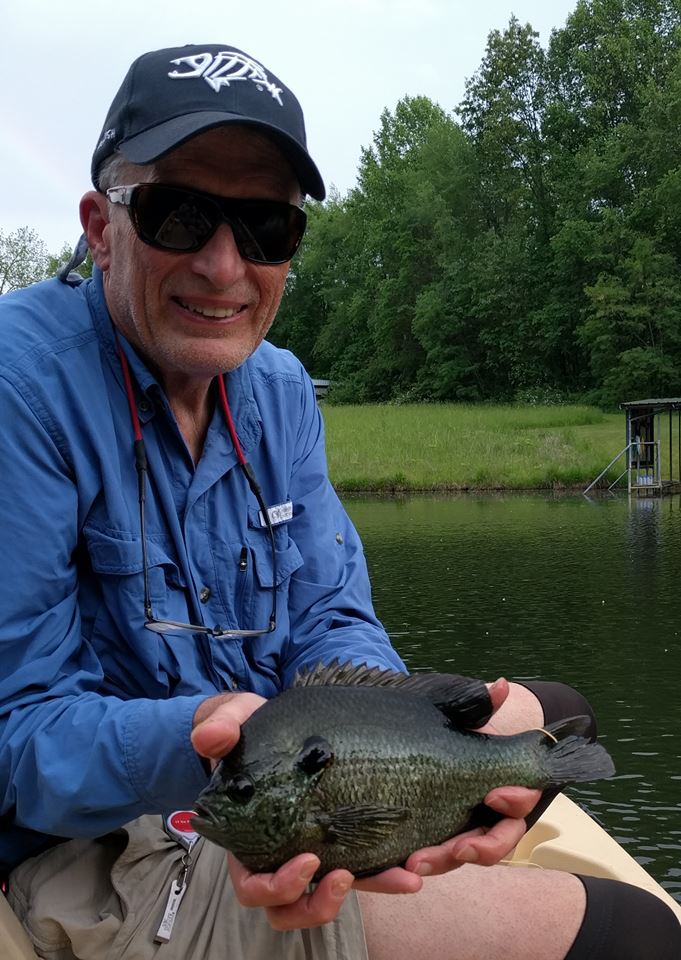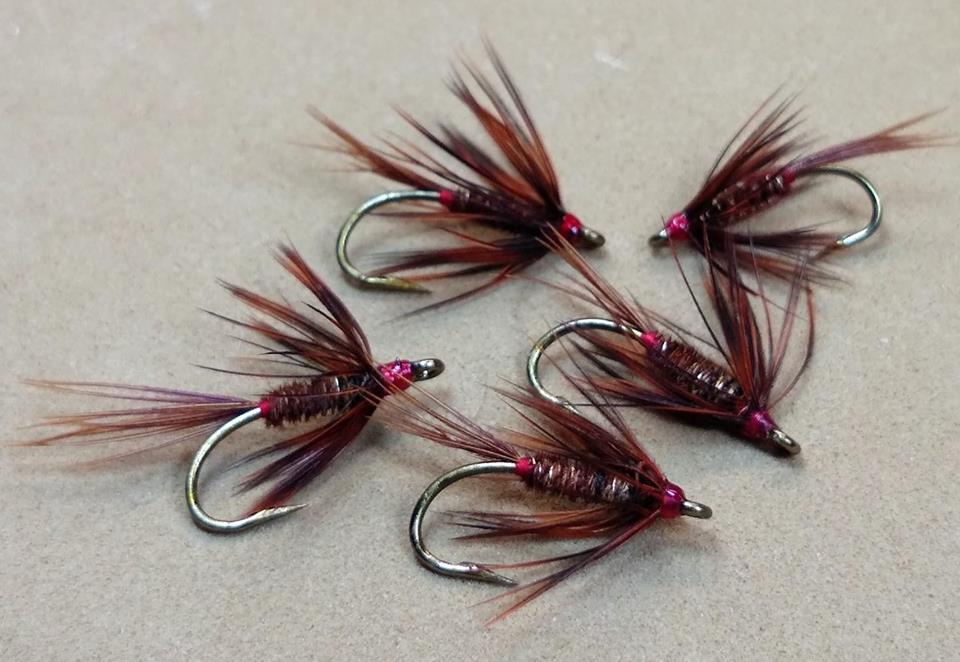The following blog post was written by guest contributor Jack Harford:
I live in Indianapolis. There are no mountain streams in central Indiana. The closest Tailwater is a 90-minute drive. There is a pond and a creek two blocks from home both of which hold bluegills, bass, crappies, rock bass, and a few catfish and carp. I like fixed line fly fishing with a tenkara rod.
The pond, previously known as “Fishless Pond” is the testing ground for new flies, rods, methods, and techniques. I say "previously known", because up until last year, it was difficult to land many (sometimes any) fish in that pond. At that time, I was using a five weight rod, making 40-50 foot casts, and using foam floating flies. Results were not good. Last year things were different. The pond gave up more fish in 2017 than the previous ten years combined. Three factors lead to this difference:
1. Tenkara Rod (short casts with a little line on the water)
2. Soft Hackle and wet flies
3. Systematic technique
As I pick up on things tenkara from different sources, it seems that original fishers developed tenkara techniques and equipment out of practicality. They were commercial fishermen whose livelihood depended on landing the most fish in the shortest time. This pragmatic approach of tenkara early adaptors is quite interesting as well as essential to the spirit of Tenkara fishing.
The pragmatic approach, out of necessity, learns from what “has been done,” but does not depend on it. It is not satisfied with what everyone else is doing; rather it looks for ways to adapt methods, techniques, and equipment to the current situation to bring optimal results. Pragmatism also lends itself to new gear, innovation, and fresh techniques.
I have not been in a situation where my livelihood, family, or their next meal depends on whether or not I land fish. Only a small percentage of fishers have had that kind of experience. The early Tenkara anglers were in such a situation and therefore looked for the most effective ways to land fish.
These days it is easy to romanticize about the beauty of the mountain streams, the simplicity of the tenkara equipment (though it seems to get more complicated each year), or the beauty of small fish on a glorious day. The early tenkara angler faced a much different situation.
At first, it was difficult adjusting to a Tenkara rod. I fished a friend’s Tenkara rod, but it was not very satisfying. Kelly Galloup, once said, “Most fly fishers have egos bigger than the state of Montana.” My name is Jack . . . and I am a castaholic ☺ I love casting a fly rod. The stimulation of a great cast, the moment of mind/body unity, strokes the ego in marvelous ways. Unfortunately, it does not always help one land more fish.
Tenkara oozes with a minimalism that requires limits, restrictions, and discipline. I like the philosophy of minimalism, but am not so keen about limitations. My fishing ego desires the constant stroking and joy of long and beautiful casts. Addictions are difficult to break. Yet, I found, from a purely pragmatic view, that adopting new equipment, different flies, and innovative techniques can lead to greater results.
First, a few lessons learned from fixed line fishing with the Tenkara rod:
• Long casts with a heavy line scare fish the whole length of the cast.
• It is easier to detect subtle takes with a shorter line.
• It is much easier to set the hook when the fly is closer to you.
• With a shorter line, you can often see the fish take the fly even subsurface.
The Flies
Second, Soft hackle flies and some traditional wet flies have become a part of my arsenal since studying Davy Wotton’s DVD, “Wet Fly Ways” and reading Sylvester Nemes book, “The Soft-Hackled Fly and Tiny Soft Hackles.” Davy and Sylvester are strong advocates of subsurface flies and their effectiveness in seducing trout. Here in Indiana bluegills, crappie, and even bass like to catch soft hackle flies.
The Green Tail Caddis
The Green Tail Caddis, a Davy Wotton pattern, was the most successful in my first year of wet fly angling. On an outing to a farm pond with the expectation of some large bluegills, a 10.5-inch bluegill latched on to a Green Tail Caddis, and about 30 minutes later his 11.25-inch big brother was landed.
Other soft hackle flies and wet flies that have been successful are:
• Bead thorax Soft Hackle
• Pheasant Tail and Partridge
• Kate McClaren (and variants)
The Bead Thorax Soft Hackle
The Soft Hackle Pheasant tail
The Method
When fishing a two or three fly set up, I like to use the wet fly technique of dancing the top fly in the surface film. This acts like a floating insect struggling in the water, and the commotion attracts fish to it or the trailing fly. Sometimes pulsing the flies under the surface just a slow, steady retrieve is needed.
The third factor is developing a systematic technique. In “Wet Fly Ways” Davy Wotton elaborates on making a few casts to an area and then moving about a leader’s length up or downstream to make the next 3 or 4 casts. This way, casts are landing in fresh water on a continual basis, not constantly “lining” the fish, and disturbing the water.
The 3-4 Method: Make three casts and then take four steps and make the next three casts, moving around the pond. A fly fisher can make it all the way around a small pond in an evening. A couple of times around the pond will reveal a few hot spots to hit when you have little time and a big urge to fish.
Rigging Up
Here's my setup:
• 12’ Tenkara rod (Iwana)
• 12’ orange level line (4.5) attached to the lilian with a slip knot and ending with a figure 8 knot
• 3’ mono 4x tippet material attached above the figure 8 knot with a Davy knot
• 30 inches of 4x attached with a triple surgeon’s knot, leave a 6’ tag on the down side.
• Dropper fly is usually a wet fly, soft hackle, caddis emerger, etc.
• Point fly – a bead head soft hackle or nymph
Conclusion: Inherit the pragmatic approach of early Tenkara anglers and find out what works for you. Let me know how it goes, Jack Harford jharford.indy@gmail.com Tight lines and good luck!!




